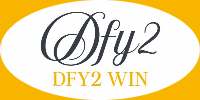Work From Home: Designing a Workspace That Boosts Creativity
Working from home has become more than just a trend—it’s a lifestyle. And while the perks are undeniable, maintaining creativity in a home environment can be challenging. Let’s dive into how you can design a workspace that not only facilitates productivity but also sparks creativity! 🖌️✨
Table of Contents
1. Introduction
2. Understanding Your Creative Needs
3. Choosing the Right Space 🏠
4. Personalizing Your Workspace 🎨
5. Incorporating Nature 🌿
6. Technology and Tools for Creativity 💻
7. Conclusion
8. FAQs
Understanding Your Creative Needs
Before you start rearranging furniture or buying new decor, it’s important to understand what you need to be creative. Do you thrive in quiet environments or need a bit of background noise? Are you inspired by colors, or do you work best in minimalist settings?
Reflecting on these preferences will guide you in creating a space that truly feels inspiring. After all, creativity is deeply personal, and understanding your unique needs is the first step toward fostering it.
Choosing the Right Space 🏠
Not every nook in your home is suitable for a creative workspace. Look for a spot with ample natural light, as it can significantly enhance your mood and brain function. If possible, choose a location that’s separate from your relaxation zones—this separation helps maintain work-life balance and keeps distractions at bay.
Consider the ergonomics of the space as well. A comfortable chair and desk setup can prevent physical strain, allowing you to focus on your creative endeavors.
Personalizing Your Workspace 🎨
Once you’ve chosen the perfect spot, it’s time to make it your own. Personalizing your workspace not only makes it more inviting but also stimulates creativity. Here are a few ideas:
– Add pops of color through artwork or accessories to energize the space.
– Use organizational tools like corkboards or whiteboards to visualize your ideas.
– Incorporate personal items like family photos or travel souvenirs to evoke positive memories and emotions.
Incorporating Nature 🌿
Bringing elements of nature into your workspace can work wonders for your creativity. Plants, for instance, have been shown to improve mood and productivity. If you don’t have a green thumb, start with low-maintenance options like succulents or snake plants.
Additionally, consider the use of natural materials, such as wooden furniture or stone accents, to create a calming atmosphere.
Technology and Tools for Creativity 💻
In today’s digital age, technology can be a powerful ally in boosting creativity. Equip your workspace with the right tools:
– A reliable computer with creative software like Adobe Creative Suite or Canva.
– High-quality headphones to immerse yourself in music or audio that stimulates your thinking.
– A smart speaker or digital assistant to manage tasks and set reminders effortlessly.
Conclusion
Designing a workspace that boosts creativity is all about understanding your unique preferences and needs. By thoughtfully selecting your space and personalizing it with elements that inspire you, your home office can become a powerhouse of innovation and productivity. Remember, a well-designed workspace is more than just a place to work; it’s a sanctuary for your creative spirit. 🌟
FAQs
Q1: How can I make a small space more conducive to creativity?
A: Maximize vertical space with shelves, use multifunctional furniture, and keep the area clutter-free to maintain focus and inspiration.
Q2: What colors are best for a creative workspace?
A: Colors like blue and green are known to enhance creativity, while yellow can stimulate innovation and energy.
Q3: How often should I update or change my workspace?
A: It’s beneficial to make small updates periodically. Refreshing your space every few months can reignite your creativity and prevent stagnation.
Q4: Can scents influence creativity?
A: Absolutely! Scents like lavender and peppermint can boost concentration and creativity, while citrus scents are known to uplift and energize.
Q5: How do I balance functionality and aesthetics in my workspace?
A: Prioritize ergonomics for comfort, then layer in aesthetic elements that inspire you. It’s all about striking a balance that serves both form and function.

